Beautiful Cotswold gardens to visit in spring
PUBLISHED BY Paula

C
overing over 800 square miles and running through five counties, the Cotswolds are one of the biggest delights of the English countryside. There are many things to see in the Cotswolds, from the quintessential villages crafted from local golden stone to the rolling hills, every part of the area is picture perfect. No part more than the vast collection of public gardens, especially when spring rolls around and the blossoms come out-you really could believe you are living inside of a postcard.
We spoke to Sally Graff of the Cotswold Tourism Board about why you should want to visit the opulent Cotswolds gardens this spring: “The Cotswolds has some of the best snowdrop displays in the country and from as early as January these little flowers bring hope for the new-year. As the days begin to warm the bright yellow daffodils make a welcome appearance before the trees become awash with glorious blossom so make sure you visit the arboreta at Batsford and Westonbirt.”
With Sally’s recommendation in mind we will explore some of the most stunning Cotswolds gardens this spring, and help you plan your perfect last minute getaway.
Sezincote Estate
Sezincote Estate is a unique and extraordinary Indian house set amidst the Cotswold Hills. It’s a classic example of picturesque garden design, contrasted against bright, Asian architecture built with local golden brick. Situated within the rolling hills of the North Cotswolds, Sezincote is a 200-year-old Mogul Indian palace, surrounded by land laced with canals, waterfalls and temples that is reminiscent of the Taj Mahal.
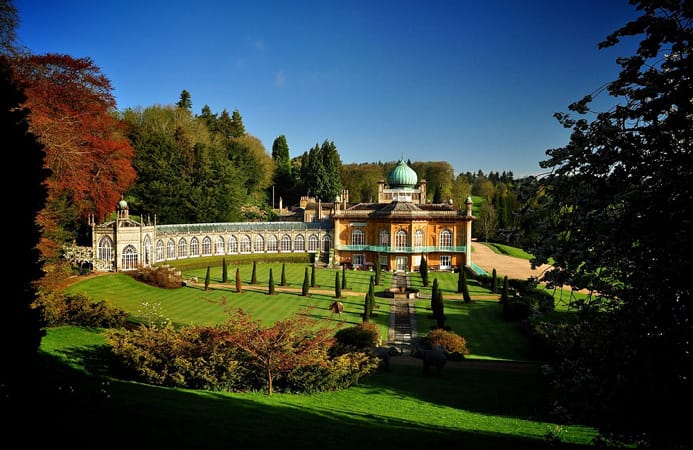
The house and grounds breathe undeniable history, and Dr Edward Peake, in charge of Sezincote House & Garden, told us a bit more about its outstanding history: “The name Sezincote is derived from Cheisnecote – ’the home of the oaks‘ – ’la chêne‘ being the French for an oak tree and ’cot‘ meaning a dwelling or shelter in Old English. This name is recorded in the Domesday Book and the description happily still applies.
“It was in 1795 that Colonel John Cockerell returned from Bengal and bought the estate from the third Earl of Guildford. John had sailed to India as a young man and made a fortune in the East India Company army as a colonel, and Quartermaster-General. John Cockerell died in 1798, leaving as his heir his youngest brother Charles, who had been with him in India, in the service of the East India Company. Charles employed another brother, Samuel Pepys Cockerell, to build him a house in the Indian manner.”
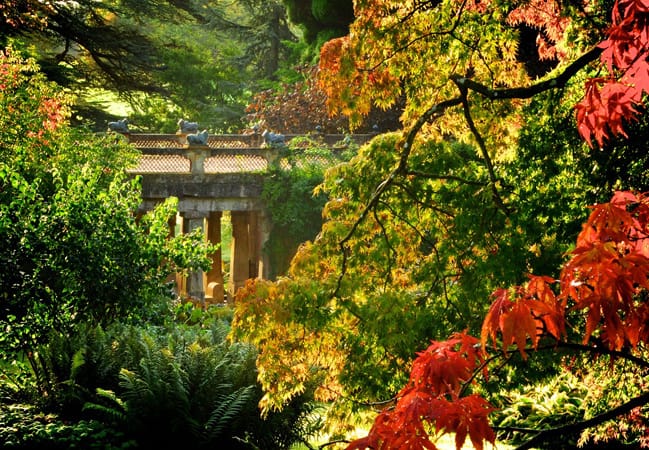
Now, over 200 years later Sezincote still stands proud today. It is thought that Sezincote is the only Mogul building surviving in Western Europe. The gardens are the perfect place to experience cultural fusion, and something truly unique.
Kiftsgate Court Gardens
Kiftsgate Court Gardens is a family-run estate that has been passed down from generation to generation for almost 100 years. Constantly in the process of being updated and renewed, a trip to Kiftsgate will never be the same experience twice, and the family tradition of seeking out new and interesting plants to compliment the original colour schemes has continued to this day.
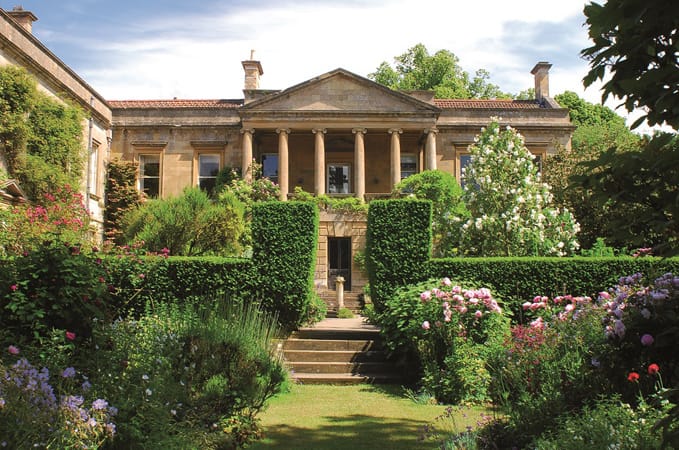
Anne Chambers, granddaughter of Heather Muir who created the gardens at Kiftsgate, spoke to us about what makes her gardens so unique: “We have our 100 year anniversary in 2019 when three generations will have lived and gardened at Kiftsgate, started by my grandmother then my mother and now my husband and I. Kiftsgate is unique as it is one family’s home and garden and has a stunning position overlooking the Evesham vale towards Wales.”
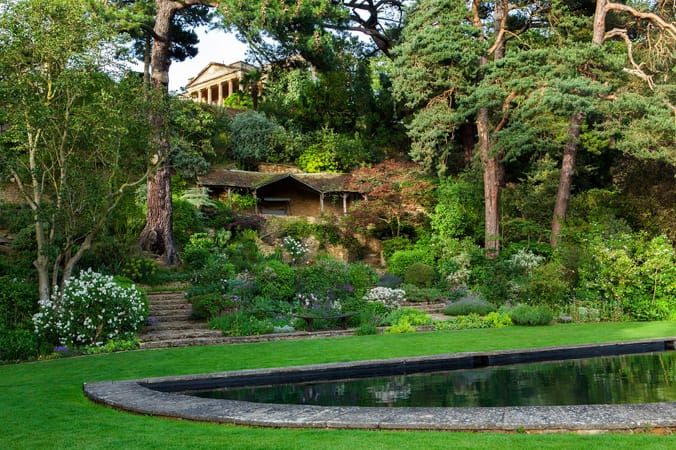
More than this the Kiftsgate has another unique quality, it is the home of the Kiftsgate Rose. Anne explained: “The Kiftsgate Rose was originally discovered here and is one of the largest climbing roses in England.” You can even take Kiftsgate home with you, as well as hosting a modest gift shop, Kiftsgate also sells a charming selection of the plants you can find around the gardens, including the famed Kiftsgate Rose.
Rousham Gardens
Rousham House and Gardens, also known as Rousham Park, is a country estate in the East Cotswolds. Rousham is one of the few gardens that has escaped alteration, with many of its original features still in situ. The house was built in 1635 by Sir Robert Dormer and is still in the same family today. A great place to take a picnic and a blanket and take it slow, there will be no crowds here.

Chris Jackson of Cotswold & West Oxfordshire District Council spoke to us about the history of Rousham: “Rousham represents the first phase of English landscape design and remains almost as its designer William Kent left it. Many of the features that delighted its 18th century visitors are still there for 21st century visitors to enjoy.”
The gardens stay to their roots, and are not commercialised at all, Chris tells us: “Not only is this one of England’s finest gardens – Monty Don’s favourite! – but it’s got great appeal for all types of garden lovers: for landscape lovers there are follies, statuary and vistas but for flower lovers there’s the walled garden, box hedges, old scented roses and abundant herbaceous borders – with one of the most spectacular dahlia displays you’ll see. Above all though the garden is completely and utterly uncommercialised – there’s no shop, no restaurant (but there are loos!).” So, grabbing a picnic and heading to Rousham is the perfect way to have a tranquil, interrupted day out.
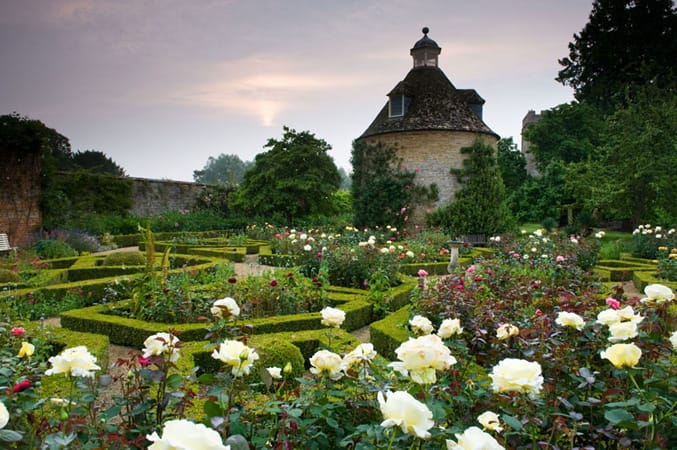
Sherwood Forest
Sherwood Forest claims itself as ‘the world’s most famous heritage forest’. The forest is not only a beautiful area of natural beauty, it is one of the most historic places in the country and has been a magnet for tourists since Victorian times. Sherwood Forest was once a Royal hunting forest is the official home of Robin Hood. You can even trek the ‘Merrie Tale of Sherwood’ walk and explore the setting for the tales of the legend himself.
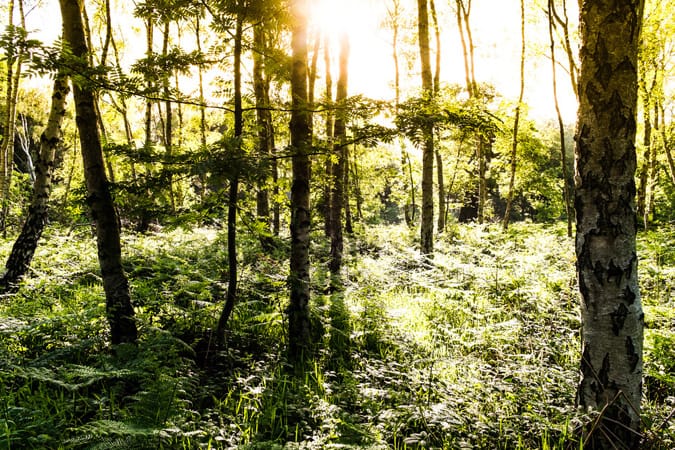
Jessica Brooks from Nottinghamshire County Council spoke to us about the wonder that is Sherwood Forest: “Sherwood Forest, Nottinghamshire’s historic countryside, is truly a place of wonder and discovery. It’s the world’s most famous heritage forest and the legendary stomping-ground of Robin Hood. Brimming with wildlife there are few places in our nation where nature can inspire you like Sherwood Forest. This 450-acre country park is now part of the Sherwood Forest National Nature Reserve and home to a fascinating ecosystem.”
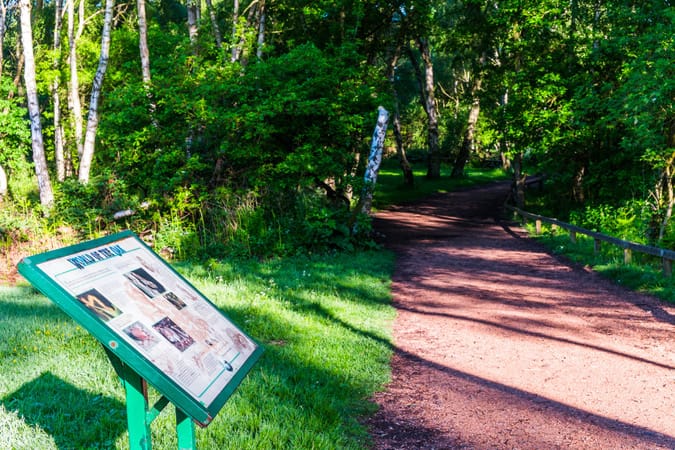
Jessica also spoke to us about why Sherwood Forest is such a great walking destination: “With an abundance of history and awe-inspiring nature, the enchanted forest offers much to discover on a walk. Wander through the forest which is home to 900 veteran oak trees including the iconic Major Oak, as you follow one of the waymarked trails amongst the leafy glades. It’s a great place to get outdoors and reconnect with nature, what’s more after your walk why not browse the Visitor Centre shops or relax with a coffee in the Forest Table Restaurant. “
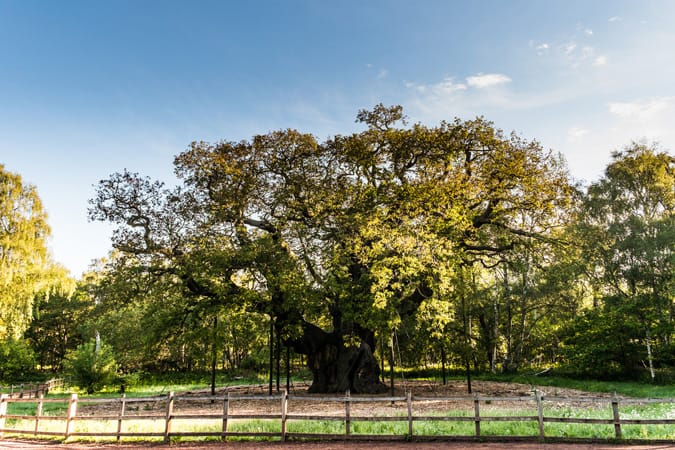
Clent Hills
The Clent Hills have long been a popular day-trip for Midlanders and visitors alike. This National Trust area is well preserved and remains a busy place all year around. In spring the hills transform as the bluebells blossom and wildlife emerges, as the summer draws in the heat brings out walkers and families, and as the autumn hits the early evenings bring dramatic sunsets.
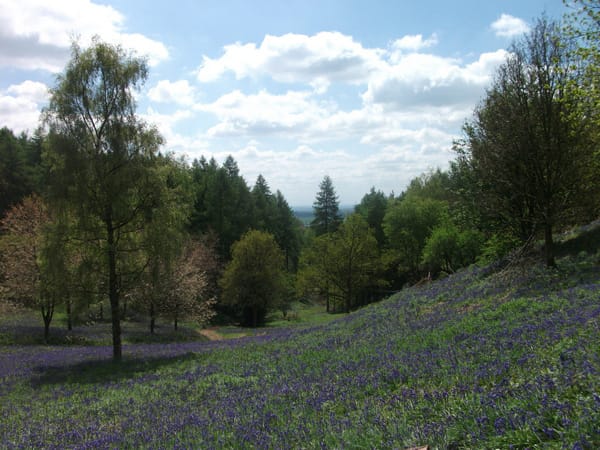
Lichfield Cathedral
Lichfield Cathedral is the only medieval three-spired cathedral in the UK and is surround by the fantastic Beacon Park and Stowe Pool . The cathedral sits in the centre of Lichfield, a civil parish and city in Staffordshire. Lichfield was the birth place of Samuel Johnson who wrote the first authoritative ‘Dictionary of the English Language’. Beacon Park is a large public park containing a boating pool, golf course and woodland area, and sites to the South West of the cathedral. To the North East is Stowe Pool, a large fishery turned reservoir. With Lichfield Cathedral at your start point you can spend a day walking around Beacon Park and Stowe Pool and exploring the centre of the historic city.
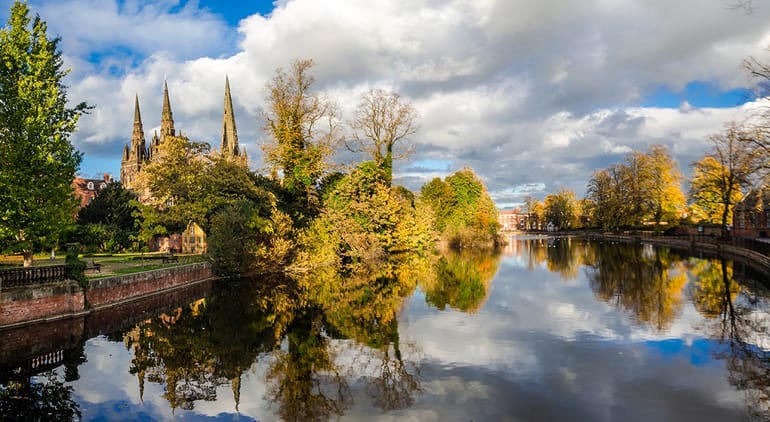
Ester Epstein, press and communications officer for Lichfield District Council, spoke to us about the perfect walk around Lichfield: “We start at Beacon Park, which is set in more than 70 acres of gardens and open space. Museum Gardens is the formal part of the park with its floral displays, avenue of trees, centrepiece fountain, as well as statues of Captain Smith of the Titanic, King Edward VII and Erasmus Darwin, grandfather to Charles Darwin. On top of this, the park offers a large playground, many varieties of golf, woodland walks and a bistro overlooking a boating pool. The walk then takes you across the road for some quiet contemplation at the Garden of Remembrance, which was created after the First World War. The spot was chosen because of its picturesque setting between Minster Pool and the cathedral.
“We move on to Minster Pool Walk, which offers stunning views across Minster Pool. It’s curving snake-like shape was designed by the local poet Anna Seward who was inspired by a visit to The Serpentine in London’s Hyde Park in 1772.
“Finally, our stroll leads on to Stowe Pool. This is a one-mile walking loop around a reservoir with fantastic views across to St Chad’s Church on one side and the cathedral on the other. You’ll meet plenty of dog walkers and joggers as it’s a favourite place for many locals looking to exercise.

“The beauty of these city walks is that all four areas are linked by a water course, and are flat and accessible, so perfect for all ages and walking abilities. And, being in the centre of the city, you are close to all the heritage attractions including Erasmus Darwin House and The Samuel Johnson Birthplace Museum , which are free to visit. There are also plenty of independent shops to discover as well as great coffee shops and restaurants all within easy walking distance.”
Belvoir Castle
If you are looking to walk at the foot of splendour, then look no further than Belvoir Castle . This historic spectacle is a family owned castle and is situated on land one gifted by William the Conqueror to one of his Norman barons. The estate is the mid-point for ‘The Belvoir Circuit’, a strenuous 21 mile-hike around the Leicestershire landscape. If the Belvoir Circuit isn’t for you and you are looking for something rather more low-impact, you can always hike some of the woodlands around the castle. The castle has some suggested walks that vary between 20 minutes and 2 hours.
It’s a great time of year to start planning some UK breaks and these are just some of the best places in the Midlands and Central England to enjoy the emerging sunshine and get back to nature.
Image Credit: Ted & Jen, Daniel Hoult , Gail Hampshire , Matt Johnson , Lichfield Council.








